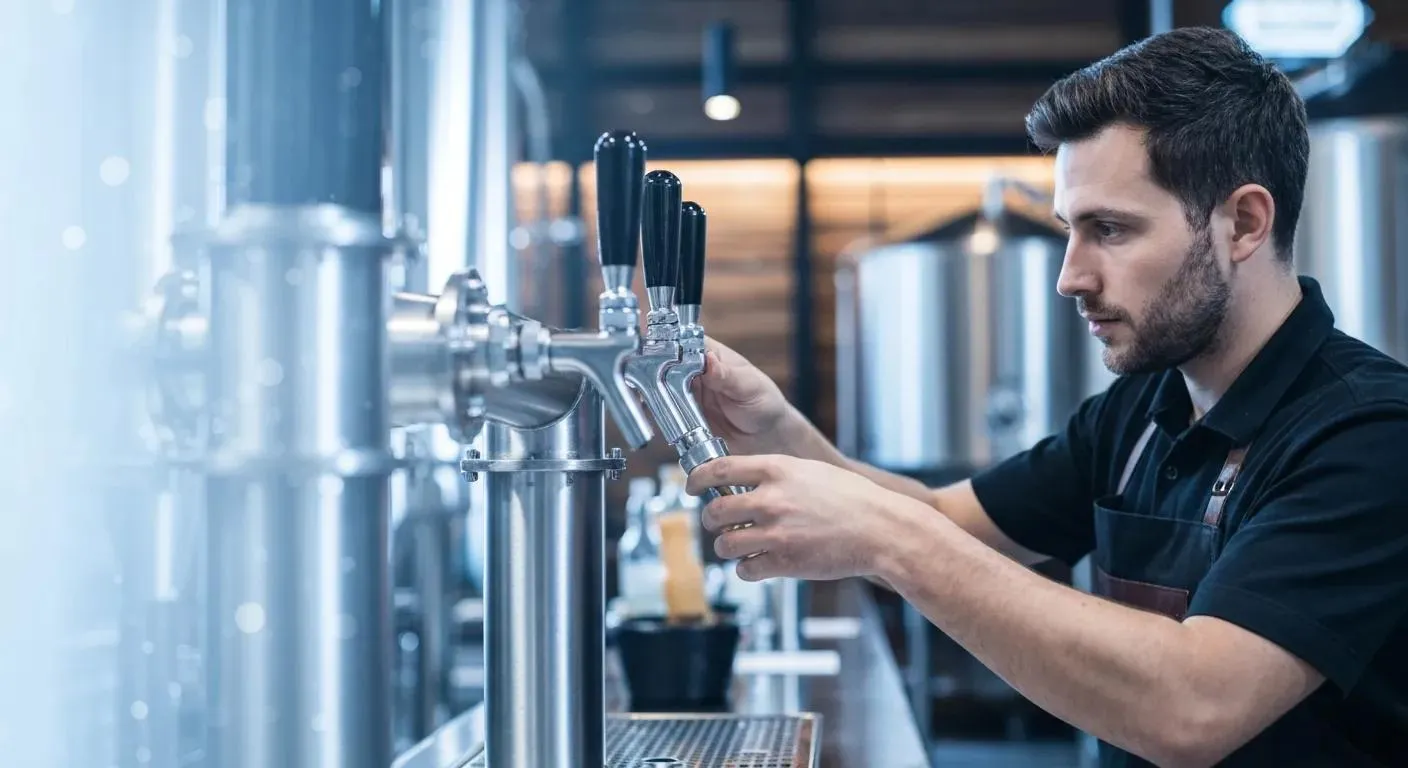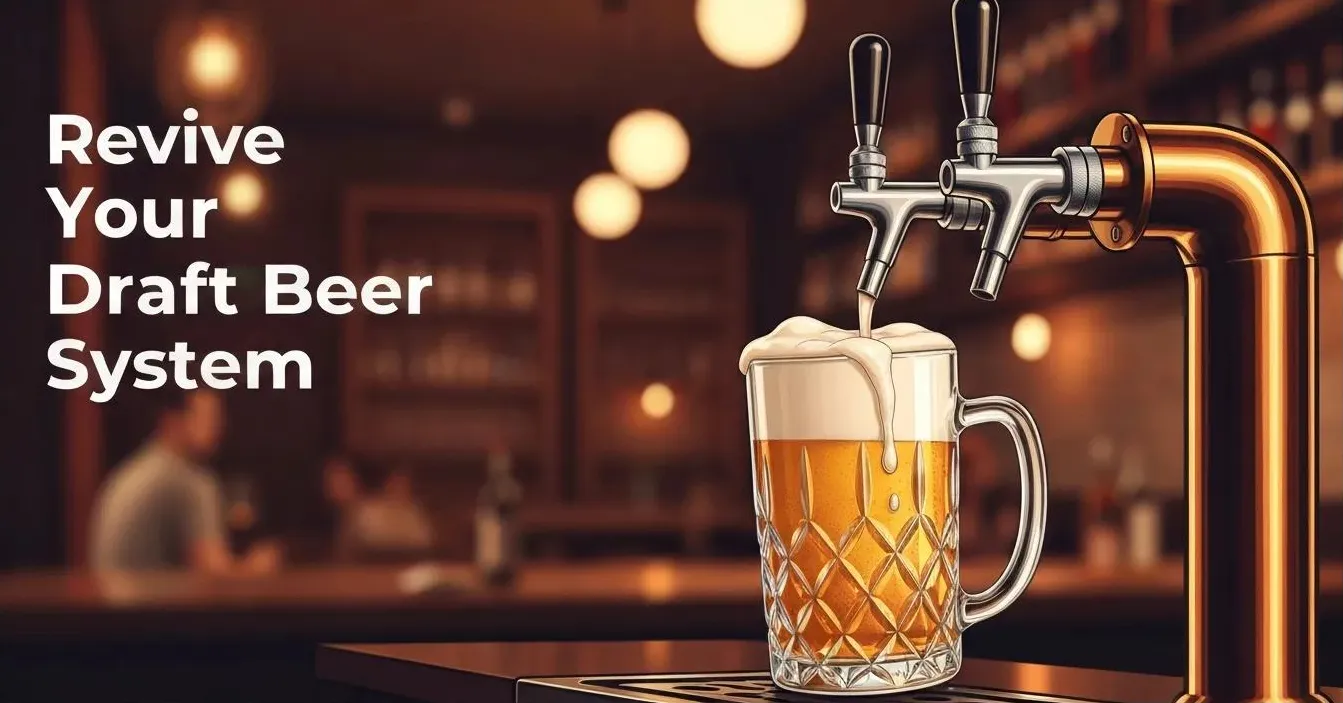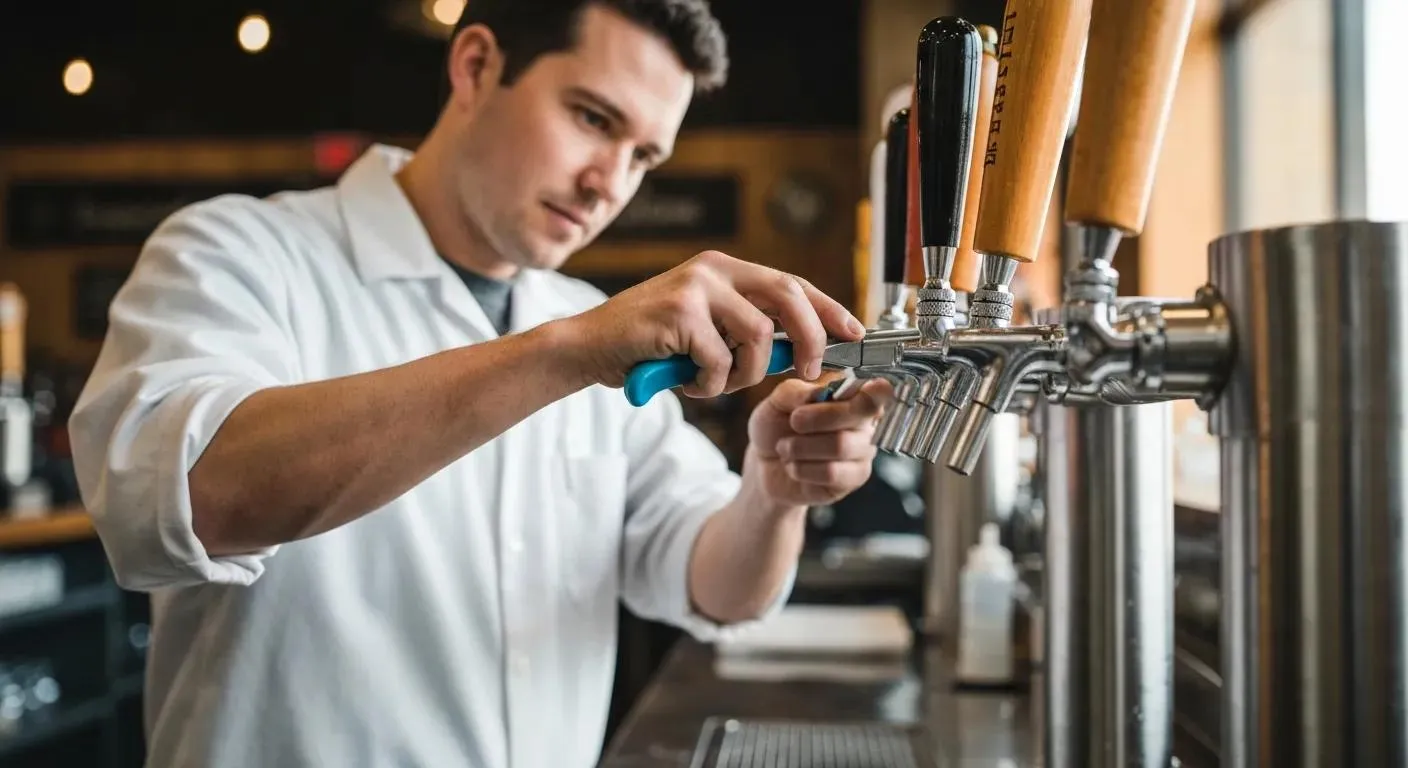Nitro Faucet: The Ultimate Guide to Choosing and Using One

Nitro faucets, also known as nitro stout beer faucets, are a type of draft beer faucet that use nitrogen gas to dispense beer. Unlike traditional CO2 faucets, nitro faucets use a combination of nitrogen and CO2 to create a smooth, creamy pour with a thick head. This makes them ideal for serving stouts, porters, and other nitrogenated beers.
Nitro faucets have become increasingly popular in recent years, particularly in craft beer bars and homebrewing circles. They are often used to serve beers that are traditionally served on nitro, such as Guinness, but can also be used to serve other styles of beer. Nitro faucets typically have a longer, narrower spout than standard faucets, which helps to create the characteristic creamy head. They also require a higher pressure than CO2 faucets, typically around 30-40 psi, which can make them more challenging to set up and maintain.

Overall, nitro faucets are a great option for serving nitrogenated beers, and can help to create a unique and memorable drinking experience. Whether you're a craft beer enthusiast or a homebrewer looking to take your beer to the next level, a nitro faucet is definitely worth considering.
Understanding Nitro Faucets
Nitro faucets, also known as stout faucets, are designed to dispense nitrogenated beer or coffee when pouring it. These faucets use a restrictor plate and a special spout to create a creamy, cascading effect in the liquid as it is poured. Nitrogen gas is used to pressurize the keg and force the beer or coffee through the restrictor plate and out of the faucet.
One of the most well-known nitrogenated beers is Guinness. Guinness uses a special blend of nitrogen and carbon dioxide to create a smooth, creamy head on the beer. Nitrogen also adds a unique mouthfeel to the stout beer itself, making it feel creamier and smoother than a regular carbonated beer.

Nitro coffee has also become increasingly popular in recent years. Similar to nitrogenated beer, nitrogen is used to pressurize the keg and force the coffee through the restrictor plate and out of the faucet. The result is a smooth, creamy coffee with a slightly sweet taste.
To properly dispense nitrogenated beer or coffee, it is important to use a nitro tap or stout tap faucet. These faucets have a longer and narrower spout than regular faucet, which helps to create the cascading effect in the liquid as it is poured. The restrictor plate in the faucet also helps to create a creamy, smooth mouthfeel in the liquid.
When installing a nitro tap or stout faucet, it is important to use the correct gas blend. Nitrogen gas is used to pressurize the keg, but it is often blended with carbon dioxide to create the desired level of carbonation in the liquid. The gas blend can vary depending on the type of beer or coffee being dispensed. Typically, it's a Guinness Blend. 25% CO2 to 75% Nitrogen.
Components of Nitro Faucets
Nitro faucets, also known as stout faucets, are designed to dispense nitrogen-infused beers and cold brew coffee with a creamy head and a perfect cascade. These faucets are essential for any establishment that serves nitrogenated beverages, and understanding their components is crucial for proper maintenance and cleaning.
Stout Faucet Structure
A typical nitro faucet consists of a handle, shank, and nozzle. The handle is used to control the flow of the beer, while the shank connects the faucet to the beer line. The nozzle, also known as a restrictor disc or diffuser nozzle, is responsible for creating the creamy head and perfect cascade.

The stainless steel stout faucet is a popular choice due to its durability and resistance to corrosion. It is often made of 304 stainless steel components, including the nozzle, shank, and handle. The stainless steel nozzle is designed to create a consistent pressure that results in a creamy head and perfect cascade.
Maintenance and Cleaning
Proper maintenance and cleaning of nitro faucets are essential to ensure consistent beer quality and prevent dripping and leaking issues. The forward seal faucet design, which features a forward seal piston chamber and an encapsulated compression spring, is easier to clean and maintain than traditional faucets.
Regular cleaning of the faucet's o-rings and sealing o-ring is necessary to prevent leaks and ensure consistent pressure. The restrictor plate and diffuser nozzle should also be cleaned regularly to prevent clogs and maintain the perfect cascade.
Here's a great video on cleaning and maintaining a Nitro faucet.
Additional Accessories
In addition, nitro infusers and nitrogen tanks can be used to nitrogenate cold brew coffee and other beverages, creating a creamy and smooth texture.
Overall, nitro faucets are crucial components of any establishment that serves nitrogen-infused beverages. Proper maintenance and cleaning, along with the use of additional accessories, can ensure consistent beer quality and sanitary conditions for customers.
Product Variations
Nitro faucets come in a variety of styles and materials to suit different applications. Here are some of the most common product variations:
Material Options
Nitro faucets are typically made from either stainless steel or chrome. Stainless steel is a popular choice because it resists corrosion and is easy to clean. Chrome is ok, but it's not as durable as stainless steel.
Installation and Usage
Installing a nitro faucet for serving nitrogen-infused beer is a straightforward process that requires a few steps. Firstly, one needs to choose a nitro tap that fits their application. There are several product options available in the market, including Micro Matic Stainless Steel Nitro Faucet and UBC Nitro Stout Faucet. Once a suitable nitro tap has been selected, the next step is to set up a gas system.
The blended gas system is essential for providing the pressure to push the beer through the faucet. A blended tank of Guinness gas is recommended, and regulator assembly and connections are required to set up the gas system. The regulator assembly helps regulate the pressure of the gas, while the connections connect the tank to the regulator assembly and the nitro tap.
Once the nitro tap has been connected to the keg, one needs to clean and maintain the keg nitro faucet regularly to ensure it functions correctly.
In terms of usage, a nitro faucet requires a nitrogen gas source to operate. The nitrogen gas provides the pressure required to push the beer through the faucet. Proper cleaning and maintenance of the faucet are essential to ensure that the nitrogen gas does not become contaminated.
In case of any issues with the nitro faucet, one can find replacement parts such as faucet diaphragm, regulator assembly, restrictor disc, spout O-ring, and more. These replacement parts can help resolve any problems with the nitro faucet and ensure that it functions correctly.
Frequently Asked Questions
What is a nitro beer tap system?
A nitro beer tap system is a type of beer dispensing system that uses nitrogen gas to provide a smooth and creamy texture to the beer. Nitrogen gas is used instead of carbon dioxide gas to pressurize the beer, which results in smaller bubbles and a creamier mouthfeel.
How Do You Pour Nitro on Tap?
To pour nitro on a tap, you need to use a special type of faucet called a nitro faucet. Nitro faucets have a restrictor plate that forces the beer through tiny holes, which creates a creamy head. To pour the perfect nitro beer, you need to hold the glass at a 45-degree angle and slowly pour the beer down the side of the glass until it's about halfway full. Then, straighten the glass and pour the beer down the middle to create the creamy head.
What is The Pressure on a Nitro Beer Tap?
The pressure on tap handle of a nitro beer tap is typically between 30 and 40 PSI (pounds per square inch). The higher pressure is necessary to push the beer through the tiny holes in the restrictor plate and create the creamy head.
What Do I Need to Set Up a Nitro Tap?
To set up a nitro tap, you will need a few key components, including a keg of nitrogenated beer, a nitrogen gas tank, a nitrogen regulator, a nitro faucet, and the appropriate tubing and connectors. It's important to ensure that all of the components are compatible and properly installed to ensure a smooth and consistent pour.
How Does a Nitro Beer Differ From a Regular Beer?
A nitro beer differs from a regular beer in several ways. First, it uses nitrogen gas instead of carbon dioxide gas to pressurize the beer. This results in smaller bubbles and a creamier texture. Finally, nitro beers often have a lower carbonation level than regular beers, making them easier to drink and more enjoyable for some people.
Here's the biggest difference seen between a regular beer and Nitrogenated beer.
Summary
A nitro faucet, also known as a stout faucet, is a specialized tap used to dispense nitrogen-infused beer. Nitrogenation gives the beer a smooth and creamy texture, which enhances its flavor and aroma. The nitro faucet works by forcing the beer through a restrictor plate with small holes, which creates a cascading effect and a thick, creamy head.
Nitro faucets are typically used to serve stouts and porters, but they can also be used for other beers, such as IPAs and pale ales. To install and maintain a nitro system, one needs a nitrogen tank, a regulator, and a gas line, in addition to the faucet and keg. It is important to clean the faucet regularly to prevent clogging and contamination.
Cleaning and disassembling a nitro faucet is relatively simple, but it requires some basic tools and knowledge. One can follow a step-by-step guide or watch a video tutorial to learn how to clean and maintain a nitro faucet properly. It is essential to remove all the parts, including the restrictor plate, the spout, and the handle, and to clean them thoroughly with a cleaning solution and a brush.
If you have any other questions please reach out to us here. For more information on draft beer dispensing check out our beer education blog.
Cheers!!



